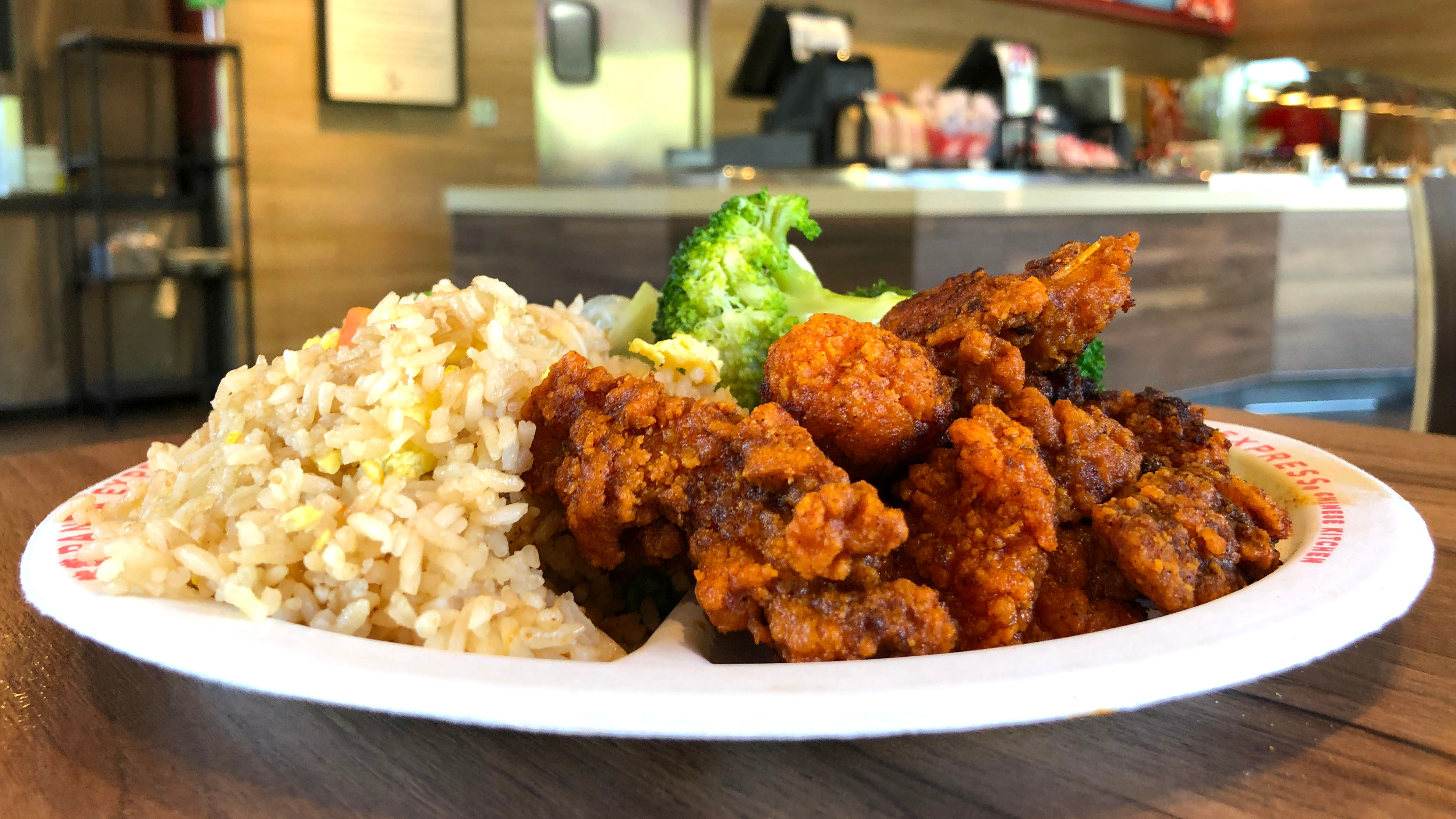Panda Express's Sichuan Hot Chicken Could Stand To Be A Bit More Sichuan
I ordered a plate of Panda Express's Sichuan Hot Chicken on the same day I received a preview copy of The Food of Sichuan, the forthcoming book from Fuchsia Dunlop (in my opinion the most important Chinese cookbook author in the English language). On first blush it'd be easy to acknowledge the dichotomy—accessible American-Chinese food, next to a treatise on perhaps China's most thrilling gastronomic province.
But in fact, it was almost as if Panda Express was venturing into legitimate Sichuanese territory. Panda's bore some resemblance to a revered dish called Chongqing Chicken (辣子鸡), where deep-fried hunks of chicken was served/buried in a molehill of dried chiles.
I'm of the mind that Americans who've never tried true Sichuan cooking should dive into it headfirst—their lips should be slick from the blood-red chili oil, their gums numb from peppercorns. Great Sichuan cooking races the heart and releases endorphins. Which is why Panda's Sichuan Hot Chicken feels like a remedial introduction to Sichuanese flavors, an unconfident half-step forward.
First off, Panda Express' Sichuan Hot Chicken resembles little from what's advertised. In the TV spot, which shows a group of cool-ass young folks across the cultural spectrum line-dancing to a Mandarin cover of "Achy Breaky Heart," the dish is presented as strips of chicken fingers:
In real life, they're oblong hunks of varying sizes, closer to what's referred to as boneless wings. They're not meant to be hand-held, just as its orange chicken is more chopsticks/fork-food.
Nevertheless, these hunks are battered and deep fried to a sturdy, craggy exterior. No one would complain about this chicken being under-salted—the deep savoriness is nice. Where Sichuan flavors are evoked is in the orange-hued chili oil that seeps onto your plate, and some chicken pieces are unfortunately greasier than others. There's no numbing-spicy "mala" effect, even though it's advertised as a "spicy Sichuan peppercorn sauce." What you do taste is the barest hint of citrus, a mild tingle from the chiles, but besides that there's little I can identify as Chinese flavors. That said, you can request the dish "Extra Spicy," which means the dish gets a shake or two from a bottle with a chile powder/seasoning salt blend.
It's not not delicious. The dish is satisfying enough, like something that'd be advertised as "Exotic Popcorn Chicken" at a suburban family restaurant. Yes, I understand Chinese-American food is milder (if not sweeter and more sauce-drenched), and many American palates would send true Sichuan food back as inedibly intense. But if you're serving something called "Sichuan Hot Chicken" anyway, you're already setting up more adventurous expectations. What's presented here isn't bad, but dang it, crank up the heat, go heavy on the minced garlic and chili, make me feel some measure of regret for ordering. No, I may not make a very good chain restaurateur, I may know nothing about market research, but I do know what type of Chinese food makes people happy.
